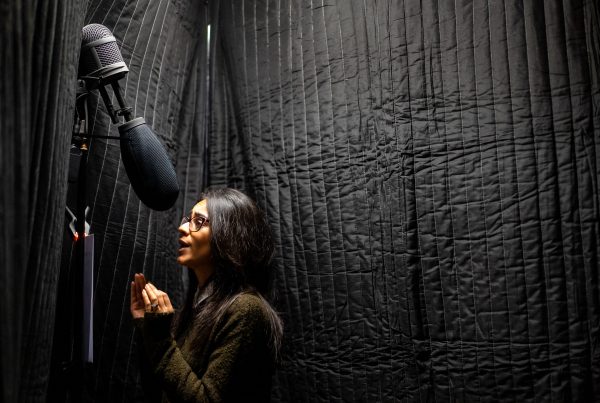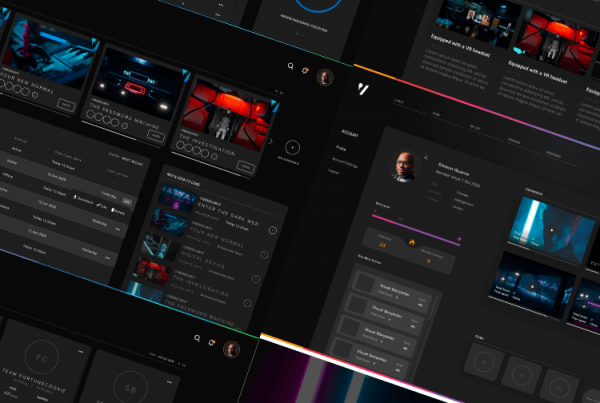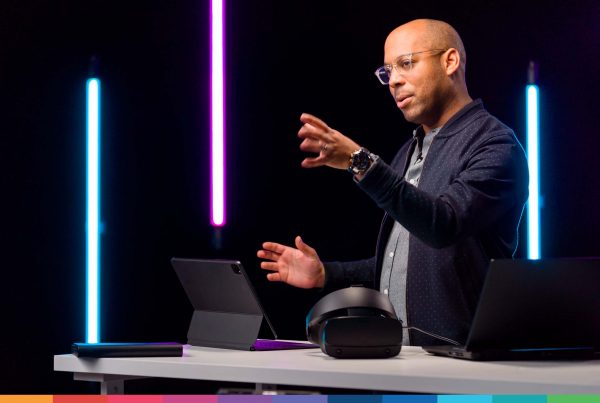🎧
𝗣𝗿𝗲𝗳𝗲𝗿 𝘁𝗼 𝗹𝗶𝘀𝘁𝗲𝗻 𝘁𝗵𝗶𝘀 𝗽𝗼𝘀𝘁? Here’s an audio version
When fostering a healthy workplace environment the question of how to handle diversity, equity and inclusion is usually (and should be) at the top of the list. It’s easy for those who don’t have to go through the daily impacts of discrimination to forget just how important inclusivity is to practising a healthy lifestyle.
It’s one of the many areas we at Vivida find ourselves passionate about, as abolishing the many barriers in place leads to an infinitely more culturally diverse and productive workplace. But before we can break these barriers down, we first need to understand them.
Microaggressions and their macro effects
Microaggressions are one of the many ways that discrimination can manifest in the workplace, characterised as a subtle instance of discrimination, perhaps unintentional, that often goes unnoticed by who aren’t targetted.
An article from the University of Edinburgh gives insight on what students think about microaggressions.
‘If you keep asking me questions like “How come your English is so good?” It just makes me feel like I’m not supposed to know English, I’m not supposed to be educated or something like that, and it doesn’t bring room for growth or improvement at all.’
If microaggressions happen repetitively, it can turn what are otherwise fleeting instances of discrimination, into something that can effect individuals on a systematic level, disincentivising them to improve on themselves. It puts people into a box, making them less likely to shoot for promotions or in some cases cause them to leave jobs due to the emotional and professional distress.
When creative voices are left unheard
The issues extend past microaggressions, with many often showing a different professional attitude toward their BAME co-workers. Forbes journalist Ruchika Tulshyan details the account of one worker who has experienced this first-hand, ‘In one encounter Wan was cut off by a man who then went on to make the exact same point she had just made.’ Thankfully Wan was able to assuredly stand up for herself and her ideas, responding moments later by saying, “Well, Bob, since that’s exactly what I just said a moment ago, it seems to me we’re in heated agreement.”
However not all minority ethnic employees are able to stand up for themselves like Wan was, especially considering the very real fear of being ostracised and stereotyped by coworkers. As a result there are so many fresh perspectives that never even get the chance to be considered.
Copywriter Aubrey Williams recognises the importance of including different perspectives, especially in the creative industry. She remarks on the unique use black voices in advertising, ‘From entertainment to social media, we see the emergence of cultural moments. Moments that create trends, and trends that create millions of dollars.’ I’m sure you’ve heard of the now infamous ‘Whassup’ Budweiser adverts that grew to fame in the late 90’s. Williams certainly hasn’t forgotten the fact that the campaign was created by black filmmaker Charles Stone III.
Without unique perspectives, so much creativity is left untapped and so many people are stuck unable to advance from their current position. This is why it’s important we create a cultural shift to make the workplace a more inclusive space and a fantastic place to start is through collaborative learning.
How can collaborative learning help?
Collaborative learning experiences allow people to work together in situations they otherwise wouldn’t have the opportunity to, whether across departmental lines or ethnic backgrounds, collaborative learning is great at getting people to connect with one another and begin to see past the issues of race.
Better yet it can be with any subject, from cyber security to D&I, as long as people are communicating and working as a team, they can begin to address issues surrounding diversity, equity and inclusion.
Exposure is the first step forward
Exposure is the key word when it comes to the major benefits of collaborative learning. Workers who might be more used to working alone are better able to communicate with their peers. It gives them direct exposure to people of different backgrounds and allows the team to start a conversation, especially when the training at hand relates to diversity, equity and inclusion.
Through asking questions and getting to know one another people are able to start understanding different perspectives in order to build a more positive mindset. These conversations can prove especially useful in putting various misconceptions to rest, as well as shed light on which behaviours cause upset.
Of course it isn’t anyone’s responsibility to become a spokesperson for their ethnic background, but having that open space to ask questions can create a real difference in helping people understand. To that end it’s all about having empathy for one another.
VIVIDA’s online collaborative learning solution
Vivida has its own range of collaborative learning experiences that encourage communication between a team of employees as they tackle various tasks. Our online experiences work at home as well as in the office meaning they’re accessible to everyone no matter their location.
They’re great at bringing people together to learn, not just about the subject at hand but also about each other and the different ways we all experience life. Through building that familiarity, together we can first step toward a better understanding and more inclusive environment for everyone to succeed.






